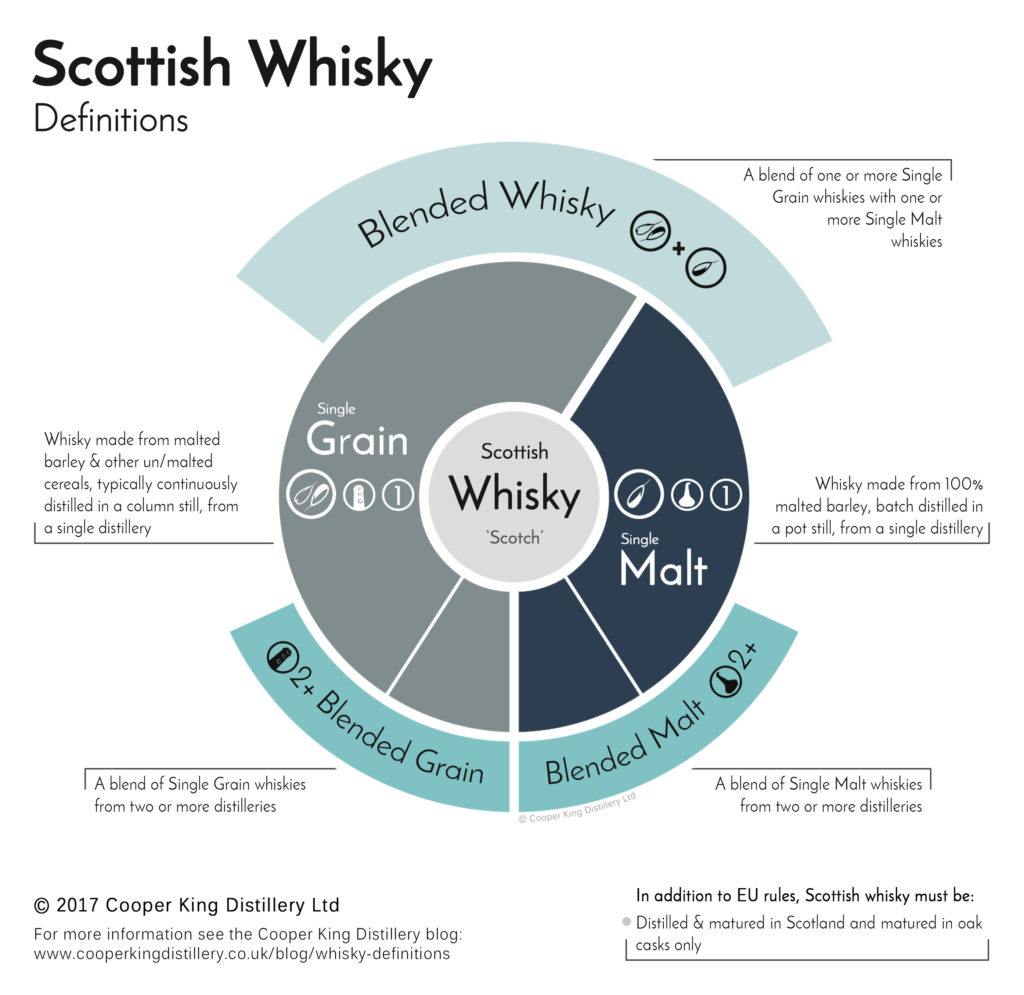The Glenlivet 12 is a single-malt scotch whisky, first aged/matured in traditional oak barrels, then transferred to American oak barrels, for a total minimum of 12 years. It is exceptionally smooth, yet still very sophisticated in its taste, thanks to the double oak barrel aging process, the specific copper still is it distilled from, and mineral rich water. Vanilla, oak spice, and stone fruit greet your taste buds and nose. Perfect mixed with any mixer, like with Coke, or even straight (whiskey in general is hard to do by itself, but believe me when I say it’s been the easiest one for me to sip). Read below if you’d like to know what makes a whiskey (which can also be spelled whisky) ticks!
Whiskey 101
What’s in the name of a whisky anyways? 12, single malt, Scotch, what? While there are many variations, brands, and bottles of whiskey, they can be grouped into a few types. First, single-malt, or blended? Generic, single-malt whiskey is made from a single malt; that is, a single grain. That’s it. Single malt in Scotland is just made from one specific grain, barley, with a few other steps integral to its naming.

Blended whiskey (sometimes called double malt archaically) is made from more than one type of grain, often using a particular single malt as a base which is then mixed with other whiskeys or neutral spirits (think vodka) that are often cheaper than the base malt, resulting in a spirit that is often cheaper to produce than a single-malt. Blended Whisky often gets a bad rap because of that fact, but that of course varies based on brands and what the blend consists of. Single-malt on the other hand, will almost always invariably be more expensive than blended due to its production method and being mixed with potentially cheaper stuff.
Next, where was it made (or its genre)? Scotch Whisky is required to have been matured in oak barrels in Scotland for a minimum of 3 years and in a specific, traditional manner. Various countries have their own definitions and regulations as well. Where whiskey is made or their specific genre (the regulations specific to their name) obviously have a huge impact in their taste profile, but also in their marketability. Finally, another major factor is maturation. How long a whiskey is aged, and what type of barrels and materials used has a huge impact in its taste as well.
